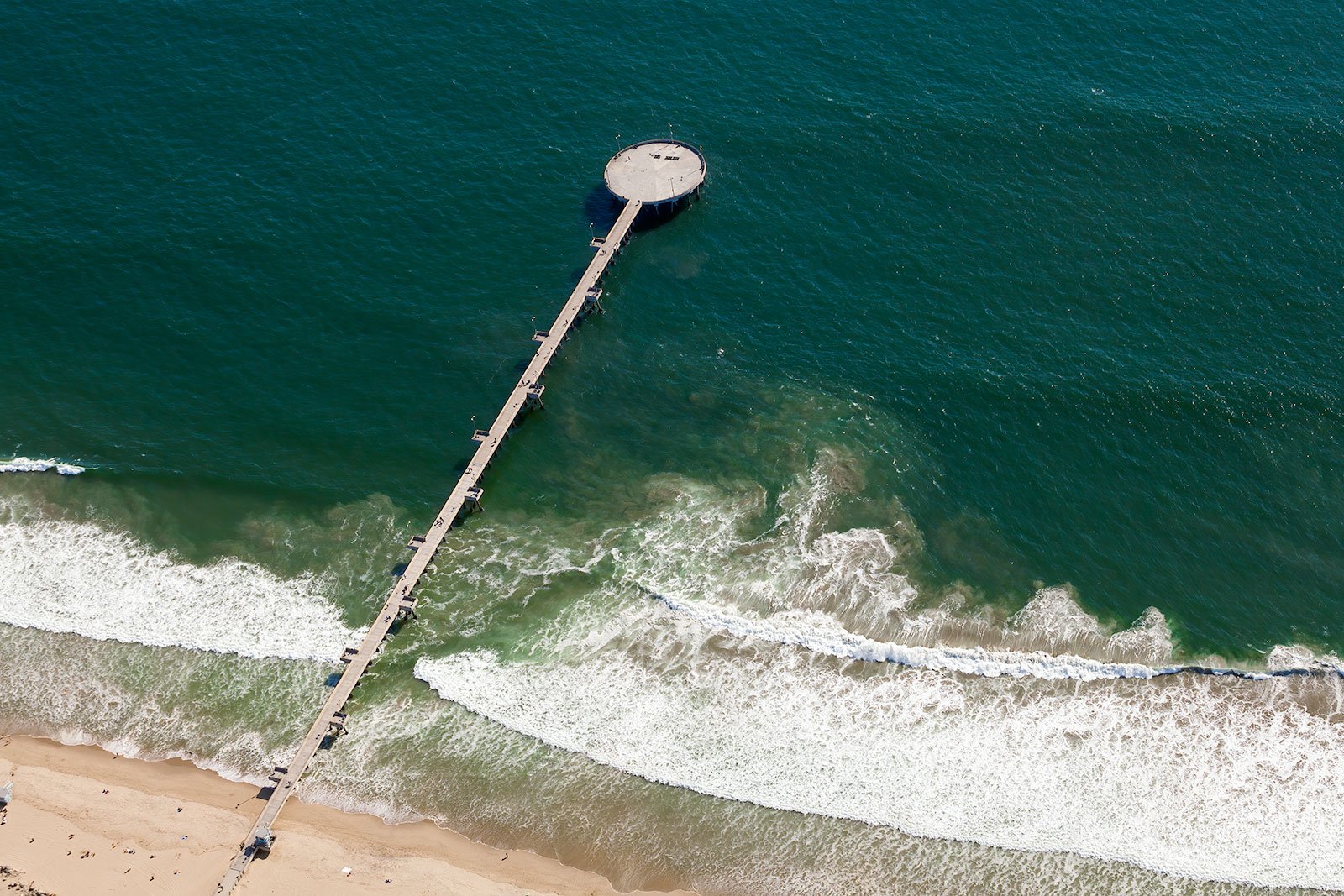
Imagine a day at the beach turned into a life-threatening situation due to an invisible force lurking beneath the waves. This is the reality for many beachgoers who unknowingly encounter rip currents, powerful currents that can carry even the strongest swimmers out to sea. Understanding rip currents is essential for a safe and enjoyable beach experience.
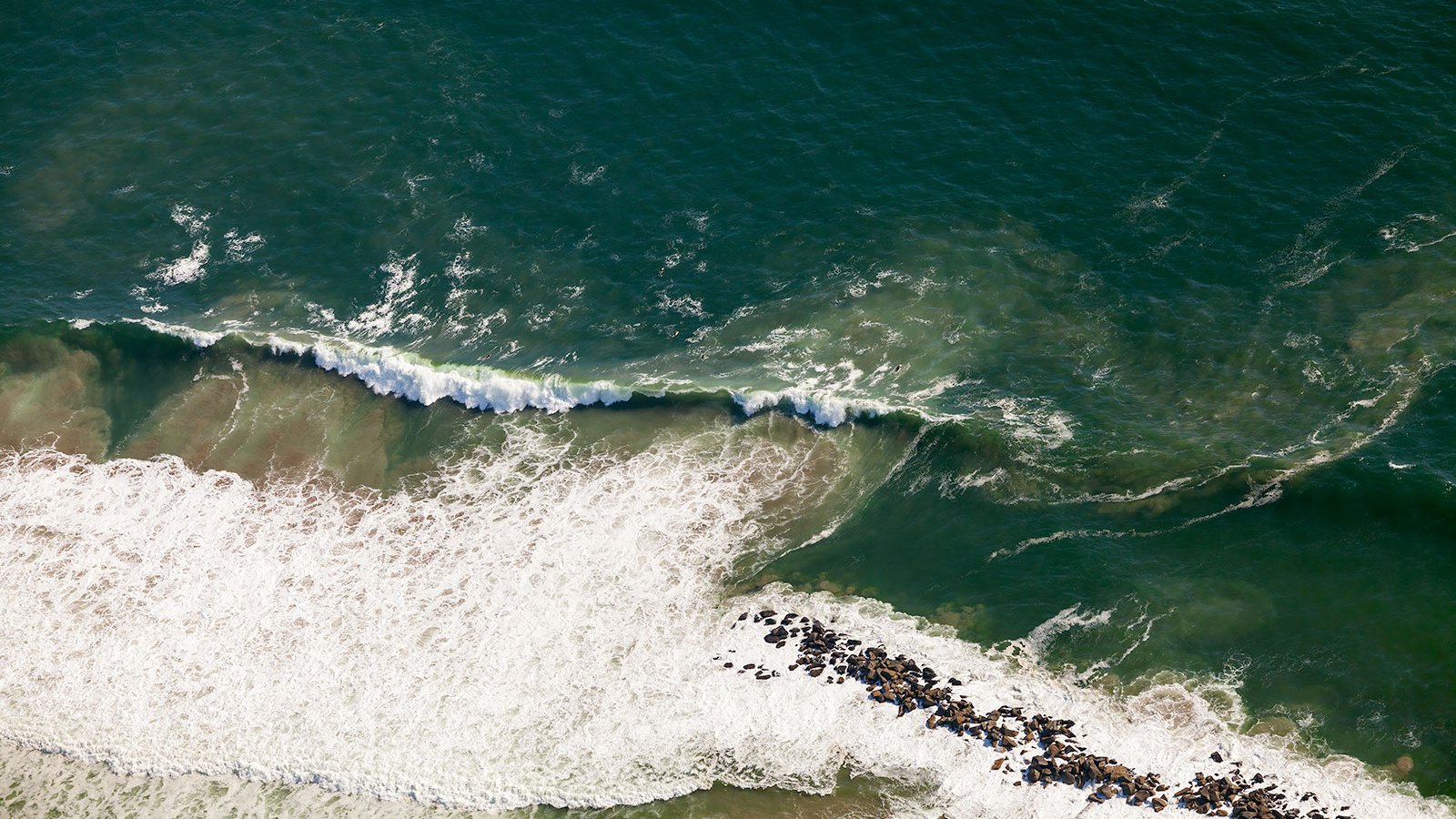
Aerial view of powerful, dangerous surf and rip currents created by the combination of swells, wind, and the unique shape of the breakwater in Venice Beach, California.
Rip Currents: Unraveling the Mystery
Rip currents, often misunderstood, pose significant risks to swimmers and surfers alike. These powerful, narrow channels of fast-moving water can develop near beaches, forming when wind and breaking waves push surface water towards the land, resulting in an elevated water level near the shore. This excess water then returns to the open sea through the path of least resistance, such as a gap in an offshore sandbar. The dangers of rip currents cannot be overstated, as they can quickly draw swimmers away from the shore and out to sea.
Understanding the differences between rip currents and rip tides is key to appreciating the risks. While these terms are often used interchangeably, they exhibit unique differences in their formation and behavior.
Rip Currents vs. Rip Tides
Rip currents, also known as rip current circulation, are powerful channels of fast-moving water that occur along the shoreline. Rip tides are a particular kind of current. They’re created when large amounts of water flow quickly through inlets, estuaries and harbors. Unlike rip currents, rip tides are more influenced by tidal activity, typically by an outgoing tide. Both rip tides and rip currents pose significant risks to swimmers and surfers, as they can quickly pull them away from the shore and out to sea.
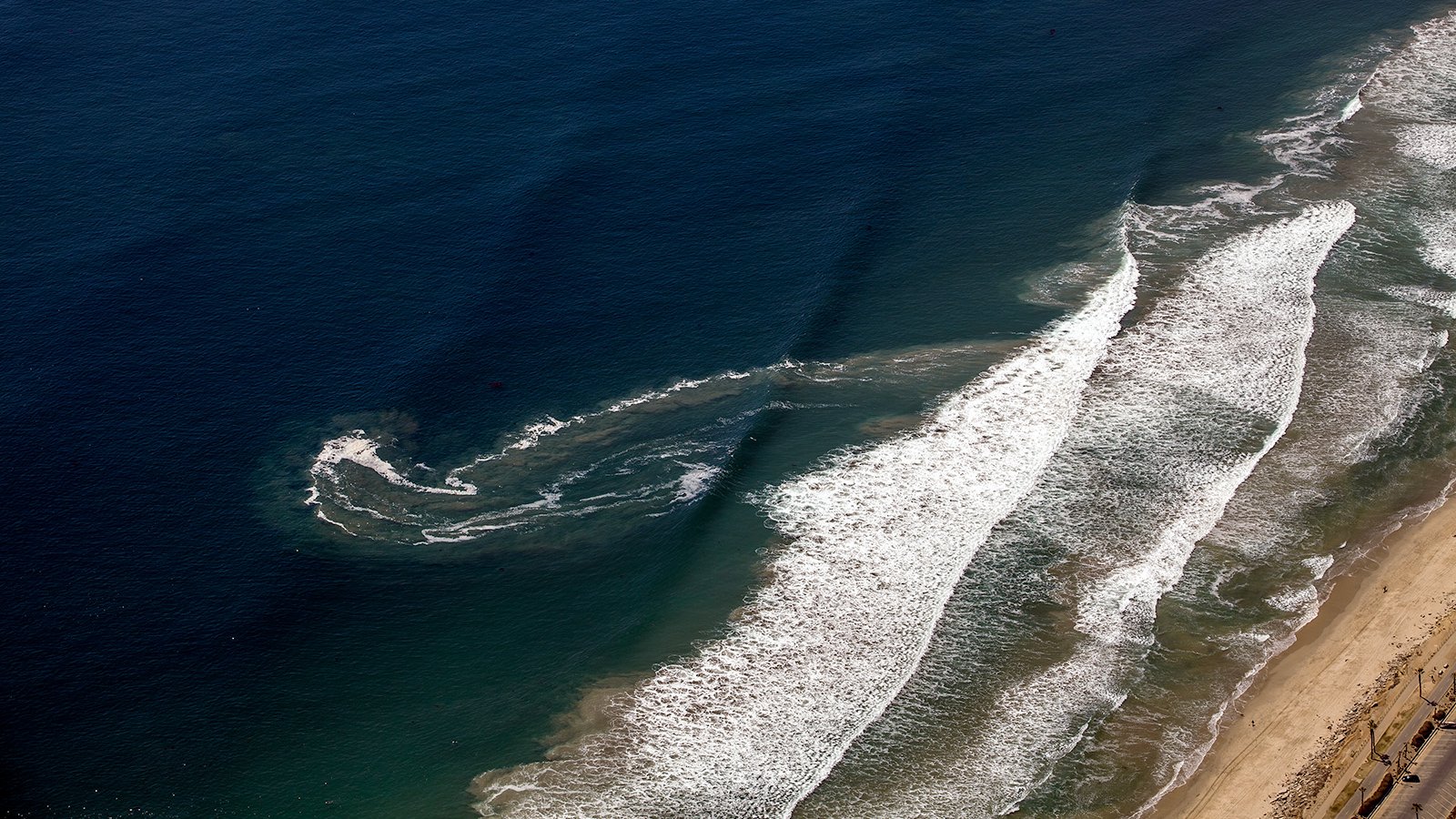
Aerial view of the immense power and danger of the massive rip current in Huntington Beach, with its lengthy and forceful shape capable of pulling unsuspecting swimmers out to sea for great distances.
Formation of Rip Currents
Various factors influence the complex process of rip tide formation, including:
- Wind, which blows perpendicular to the shoreline, pushing surface water towards the land and increasing water levels along the shore
- Waves, which carry a large amount of energy towards the shoreline, resulting in strong currents
- Underwater topography, which can create channels or sandbars that funnel water and contribute to rip current formation
These factors work together to create dangerous rip currents that can pose a threat to swimmers and beachgoers. It is important to be aware of the signs of rip currents and take appropriate precautions when swimming in the ocean.
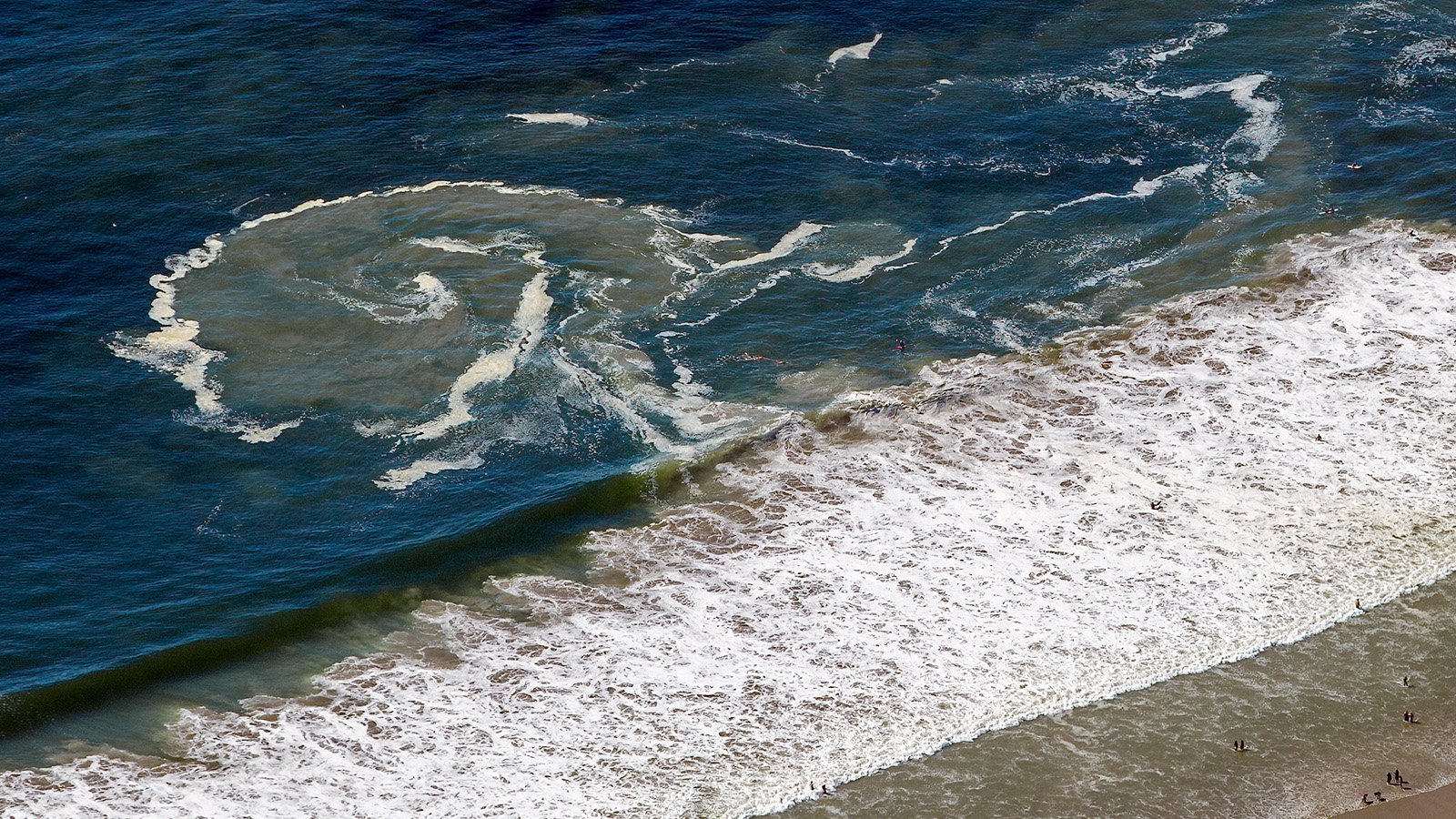
Aerial view of a single, large rip current in Venice Beach, characterized by churned-up water and white caps, providing a clear visual representation of the potentially dangerous rip current.
Identifying Rip Currents: Visual Cues and Warning Signs
Identifying rip currents can save lives by enabling swimmers to avoid dangerous situations. To identify a rip current from the shore, look for the following visual cues and warning signs:
- A channel of churning, choppy water extending from the shoreline
- A difference in water color, where the rip tide may appear darker or murkier compared to the surrounding water
- Areas where waves are not breaking or where there is a noticeable gap in the wave pattern
- Debris or foam being carried out to sea
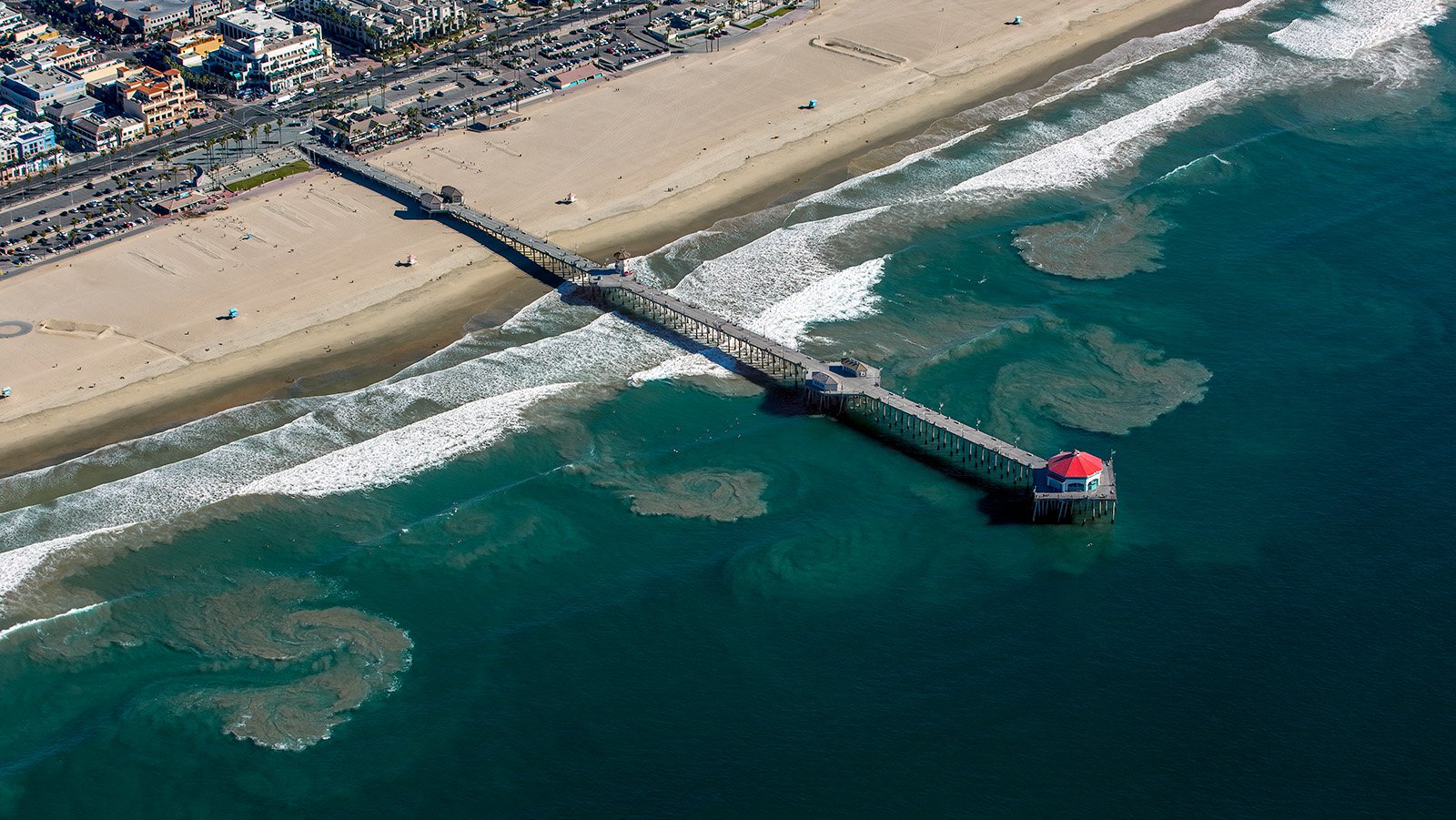
Huntington Beach Pier, a historic Californian landmark, surrounded by multiple rip currents caused by the convergence of ocean swells and tidal forces
What To Do When Caught in a Rip Current
Guaranteeing the safety in rip currents conditions is of utmost importance, especially for children and novice swimmers. If caught in a rip current, swimmers should:
- Remain calm
- Swim parallel to the shoreline
- Return to shore by following the waves
- Float and raise your arm if you require assistance
- Swim close to lifeguards for safety
Educating children on ocean safety is equally significant, as it can save lives by teaching them to recognize rip currents, stressing the importance of avoiding them, and explaining how to react if caught in one.
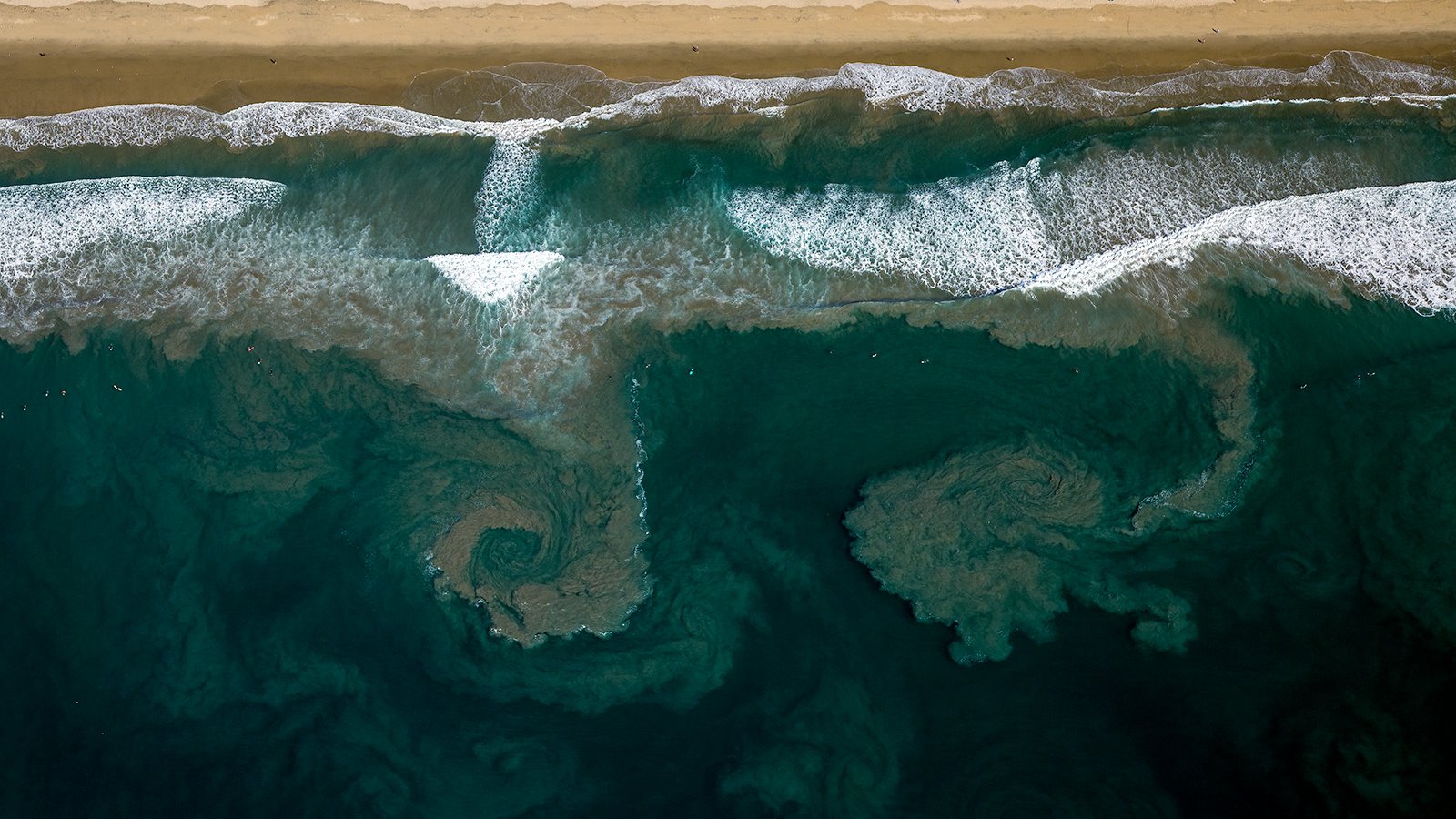
Dangerous swirling rip currents off the coast of Huntington Beach, California, resulting from the convergence of waves and tides, which disrupts the seabed and greatly increases the force of water currents, posing a serious threat to swimmers and surfers.
Escaping a Rip Current
The most effective way to escape a rip current is to swim parallel to the shore. This method allows for gradually exiting the strong current that pulls away from the beach and facilitates a safe return to shore. A typical rip current can range from 50-100 feet wide and can extend 100 yards or more offshore. By swimming parallel to the shore, one can escape the pull of the rip tide and reach safety.
Remembering this crucial piece of advice when caught in a rip tide can be a matter of life and death.
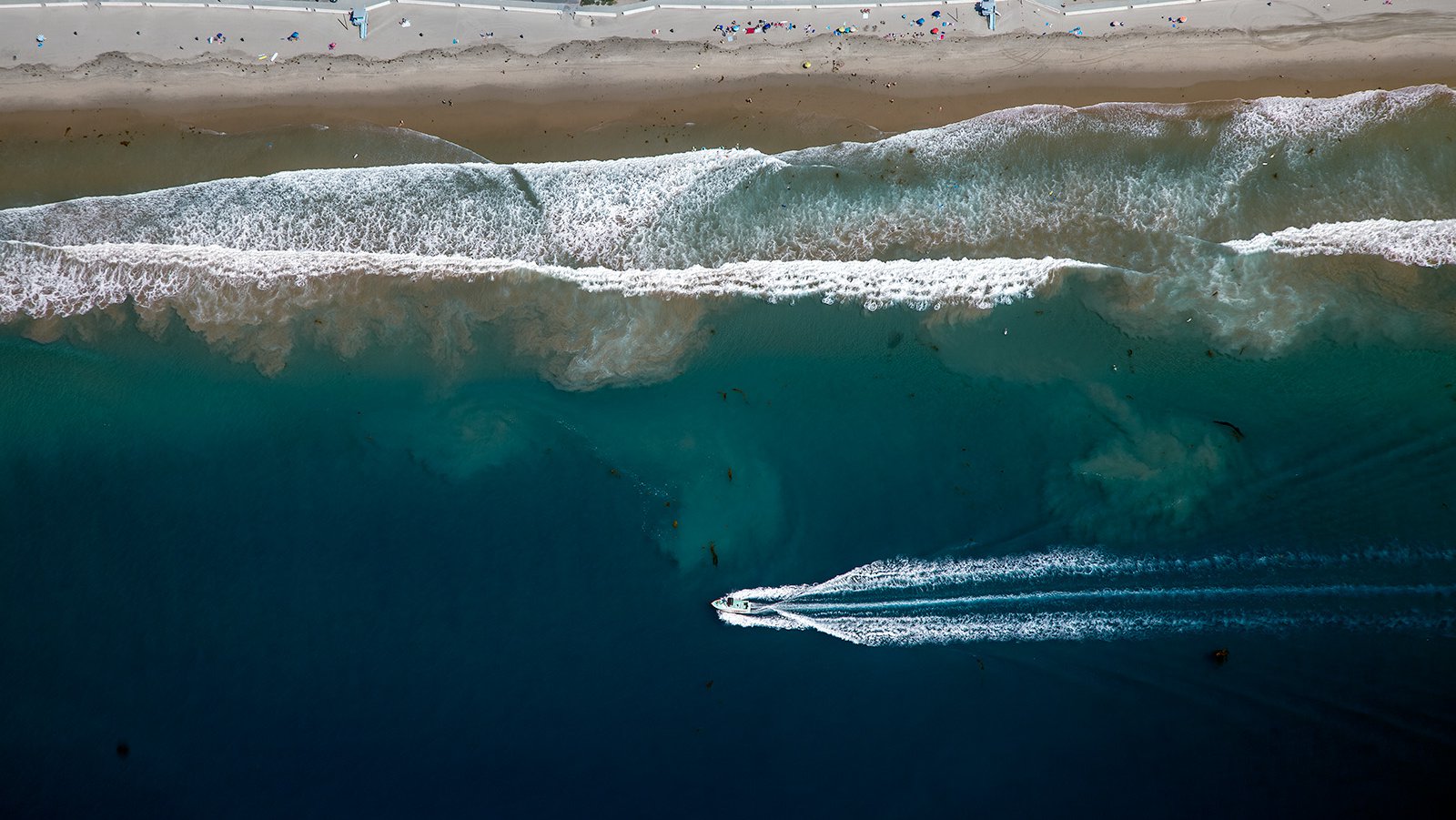
Aerial photo of an LA County Life Guard boat patrolling the waters off the Malibu coast, ensuring the safety of swimmers and surfers by keeping a watchful eye on the visible rip currents that pose a potential danger, ready to spring into action at a moment's notice to rescue anyone in need.
Supervision and Education
Appropriate supervision and education on ocean safety can preventing accidents and save lives. For rip current safety it is generally adviseable to swim at a lifeguard-protected beach and talk with a lifeguard about the conditions prior to entering the water. Also, it is important to never swim alone.
Encouraging children to participate in water safety and swimming courses from a young age is also very helpful. Parents should always remain focused when children are in the water and appoint a designated water watcher to help ensure children's safety while at the beach
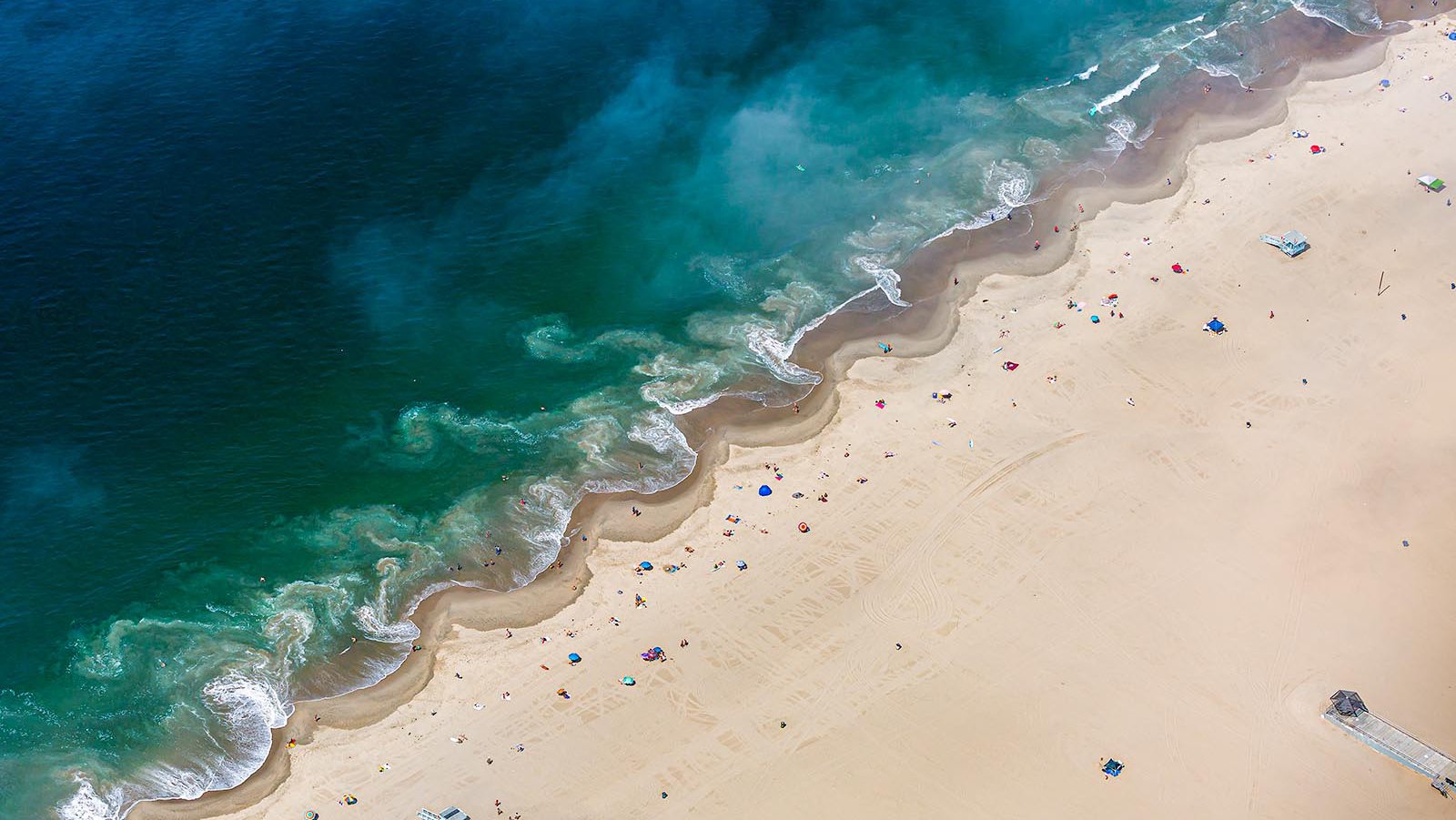
Numerous rip currents in Venice, California, resulting in the formation of scalloping patterns along the coast, a phenomenon caused by the interaction between the waves and the beach topography.
Understanding rip currents is essential for a safe and enjoyable beach experience. From recognizing the visual cues and warning signs to knowing how to react when caught in a rip, being informed and prepared can make all the difference. By taking precautions, planning ahead, and ensuring proper supervision and education for children and inexperienced swimmers, we can all enjoy the beauty of the beach without fear of the hidden dangers lurking beneath the waves.